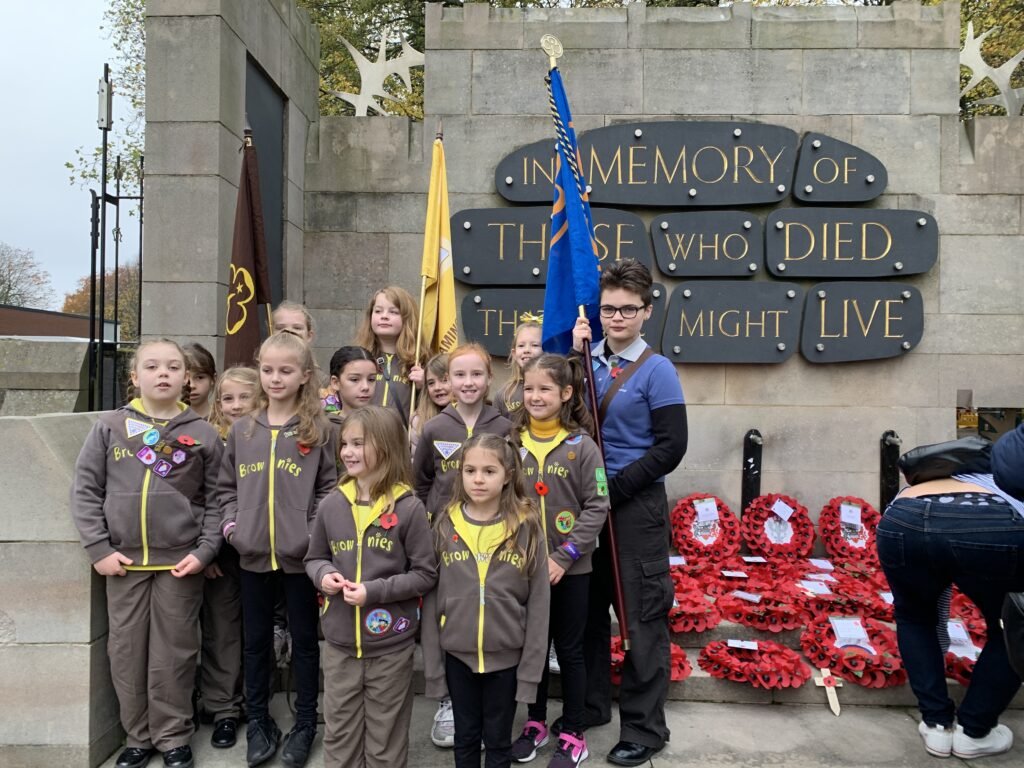“They shall not grow old” for the not-so-old: how children interact with Remembrance Day
By AJ Birt, MA History
Quote in title from ‘For the Fallen’, Laurence Binyon, 1914.
When it comes to memorialisation and remembrance, getting children involved is always tricky. It is hard to gauge whether they will fully understand the significance of a day of remembrance. For primary school children, ensuring they take it seriously is the biggest restriction on engaging the youth with Remembrance Day (November 11th). Despite these limitations, there are some child-friendly ways in which the next generation can remember the old.
The classic way in which Remembrance Day is commemorated is through wearing poppies. The poppy was chosen as an emblem of memorialisation from the poem ‘In Flanders Fields’, written by WW1 soldier John McCrae. McCrae wrote his poem following the death of a friend in battle. Poppies occupy the space where men once fought and stood in Flanders, growing unhampered between the ghosts of bodies and the very real graves of the fallen. Their vivid connection to the dead, and the evocative language of McCrae’s poem, led to them becoming a symbol of remembrance.
For young children, however, such a maudlin tale may be misunderstood. Poppies could be seen as just flowers. Additionally, the language of McCrae’s poem may be inappropriate for children in KS1.
But one cannot shield them from the existence of poppies on Remembrance Day. In 2016, CBeebies developed a short animated film as an age-appropriate way for children to understand the connection that poppies have to World War One. The watercolour animation shows a beautiful rabbit gently playing, but the field slowly becomes a site of war. The skies darken, the rabbit is suddenly alone, and explosions scar the painted background with plumes of stark white. It takes refuge under a green helmet until a finger of sunlight paints the ground and the first poppy begins to grow.
Poppies, 2016.
As the field fills up with red, the rabbit is joined by three baby rabbits, and another rabbit approaches. The imagery is clear - poppies were a sign of life after the horror of war, and are a gentle reminder of all that was experienced.
Poppies, 2016.
Another way in which children become involved in Remembrance Day is through historical discussion. This can take the form of sharing stories about family members who fought in the war, or learning about ex-pupils from their school who went to the Front.
Some schools offer assemblies with interaction from students to bring ex-pupils back to life. Reading the accounts of living beings is usually quite a sombre occasion, and so is often reserved for secondary schools.
For younger audiences, a historical worksheet may suffice to engage them in the history of Remembrance Day. Teaching resources twinkl recommends using colouring sheets and age appropriate activities, such as reading books. Organisations such as the War Memorials Trust and the Imperial War Museum also offer such activities for children.
A further way in which children engage in Remembrance Day is through parades. Remembrance Day parades happen all over the country, typically on the morning of the Sunday closest to November 11th. These parades are a solemn procession consisting of veterans, community members, and often include extra-curricular children’s groups such as the Girl Guides or the Scouts. The group walk to a local war memorial where a speech is made, and The Last Post is played. A couple of members of these clubs may be selected to place a poppy, or a wreath of poppies, on a local war memorial.
While the content of Remembrance Day is decidedly dark, and may be considered too much for youngsters to engage with, there are a myriad of age-appropriate ways that Armistice Day can continue to be memorialised.




